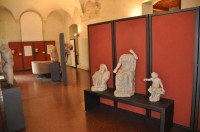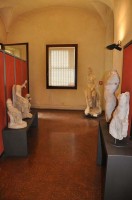Collection of Roman Sculptures of G.E. di Velo
Girolamo Egidio di Velo, a nobleman from Vicenza with a passion for Palladio's study of antiquity and a keen interest in antiquities, excavated the Baths of Caracalla in Rome between 1824 and 1827.
Using an excavation method "in broad layers rather than shafts," one of the first examples of modern archaeology, he uncovered the entire bath structure, as well as mosaics and fragments of statues and marble decorations, confirming Andrea Palladio's interpretation of the complex as a thermal bath.
The exceptional nature of the excavation attracted great interest to di Velo, as well as criticism and suspicion, which ultimately resulted in a trial for embezzlement. In 1827, after the successful end of the trial, the materials unearthed during the excavation and 22 sculptures from the warehouses of the Pontifical Galleries were transported to Velo d'Astico and later donated to the Municipality of Vicenza as the first nucleus of an archaeological museum, except for some column fragments that adorned Palladio's funerary monument.
Among the exhibits are a beautiful torso of a reclining satyr (or faun?), a porphyry fountain mask, a female head, and a bearded head from a high relief, all dating to the 2nd century AD and discovered during the excavation of the Baths of Caracalla, as well as statues and heads from the former Collezione dei Musei Vaticani.
Image Gallery
 |
 |

